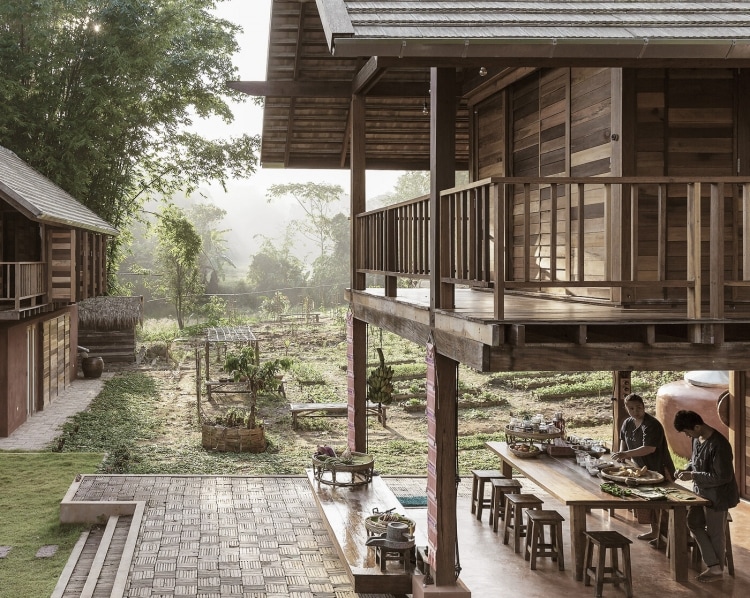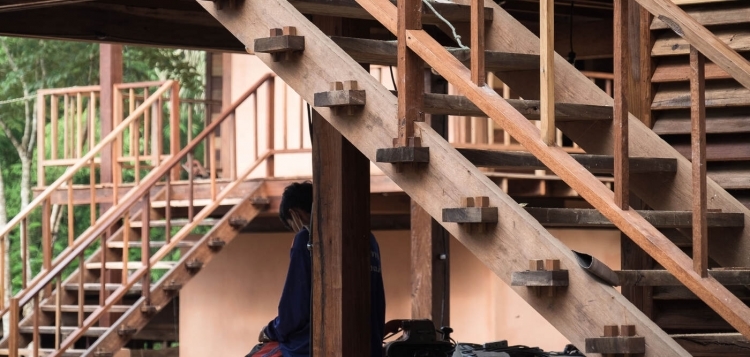Vernacular Architecture in use for Farmstay in Thailand
Ahsa Farmstay offers tourists from all over the world to be hosted in the farm stay surrounded by a colorful and authentic northern Thai rural setting. One of the key elements is its vernacular housings where the tourist further deepen their understandings towards Chaing Rai culture. 
This project allowed the architect to examine architecture as the relationship between buildings and culture. In Chiang Rai, similarly to other rural places in the country, vernacular building techniques are not passed down from generations to generations. As people livelihoods changed, traditional homes are becoming less relevant. Vernacular houses are either inadequately adapted with ‘modern extensions’ or dismantled and sold as reclaimed timber, in parts spurred on by other poorly adapted buildings.

Natural ventilation is employed for cooling during the summer and double layer fenestration for insulation in the winter.
The project address this issue through the program of cultural tourism and the adaptation of vernacular architecture for future generations. Tourists will be living with a local host in vernacular housings following the traditional way of Northern Thai lifestyle. The aim is to learn from local know-how, culture, and traditions thus adapt them where appropriate to ensure relevance in present times and well into the future.

All wooden structures are raised on concrete stumps to separate timber from the ground and allow the structure to stay dry in events of flash floods from the mountain.
The project takes advantage from its rural, resource rich site. The project relied primarily on renewable resources. Rain water is collected in a natural reservoir on a hill behind that is piped on to site for fresh water uses during construction and continued through the operation.
The three main building materials were reclaimed timber, on-site earth mixed concrete and locally sourced roofing tiles. Reclaimed timber requires more labor hours than freshly milled standardized planks which incur higher construction cost, however this is offset by lower initial material cost. The architect chose to conserve the essence of the original buildings in parts rather than restoring as whole. Distinctive forms some material had, were preserved and celebrated. Each mark tells the journey story of each piece of timber, where it has been and how it was used. Some details were designed to mimic vernacular construction methods, others were updated and improved upon to ensure structural integrity. 
The project is highly specific to its surrounding context of time, culture and place. Ahsa Farmstay project carefully considers sustainable tourism as a catalyst for cultural and knowledge exchanges, which benefits both tourists and locals, as well as positively impact the surrounding community.
"Ahsa Farmstay" project details
| Location | Chiang rai, Thailand |
| Completion date | 2018 |
| Total floor area | 722㎡ |
| Site area | 144,000㎡ |
| URL | https://ahsafarmstay.com/ |

 English
English 日本語
日本語
